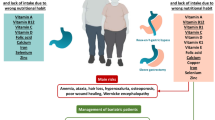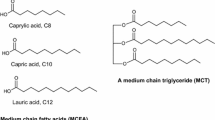Abstract
The fractional conversion rates of plasma phospholipid α-linolenic acid (18:3n-3) and linoleic acid (18:2n-6) to docosahexaenoic acid (22:6n-3) and arachidonic acid (20:4n-6), respectively, and the fractional rates of incorporation of 22:6n-3 and 20:4n-6 into plasma phospholipids were determined in 27 healthy 3-wk-old term infants who had received formulas with ≈16% of fat as 18:2n-6 and 0.4% (n=6), 1.0% (n=11), or 3.2% (n=10) as 18:3n-3 from birth. The infants were given a single dose of both [U-13C] 18:2n-6 and [U-13C]18:3n-3 with a feeding, and blood samples were collected 8, 12, and 24 h afterward for determination of the isotopic enrichments of the [M+18] isotopomers of plasma phospholipid fatty acids by negative chemical ionization gas chromatography/mass spectrometry. A simple precursor/product compartmental model was used to estimate fractional rates of conversion and incorporation. All infants converted 18:3n-3 to 22:6n-3 and 18:2n-6 to 20:4n-6. Although the fractional rate of conversion of 18:3n-3 to 22:6n-3 did not differ among groups, the fractional rate of incorporation of 22:6n-3 into the plasma phospholipid fraction was greater in infants who received 3.2% vs. 0.4% or 1.0% 18:3n-3 (4.1±2.2 vs 1.6±1.5 or 2.0±1.0% of the plasma phospholipid 22:6n-3 pool daily). The fractional rate of conversion of 18:2n-6 to 20:4n-6 was less in infants who received the 3.2% 18:3n-3 intake (0.4±0.3% of the plasma phospholipid 18:2n-6 pool daily vs. 1.1±0.7% and 0.8±0.5% in those who received 0.4 and 1.0% 18:3n-3, respectively). The fractional rate of incorporation of 20:4n-6 into plasma phospholipid also was less in the 3.2% vs. the 0.4 and 1.0% 18:3n-3 groups (2.7±1.4% vs. 5.9±2.6 and 4.4±1.7%, respectively, of the plasma phospholipid 20:4n-6 pool daily).
Similar content being viewed by others
References
Demmelmair, H., Rinke, U., Behrendt, E., Sauerwald, T., and Koletzko, B. (1995) Estimation of Arachidonic Synthesis in Fulleterm Neonates Using Natural Variation of13C-Abundance,J. Pediatr. Gastroenterol. Nutr. 21, 31–36.
Carnielli, V.P., Wattimena, D.J.L., Luijendijk, I.H.T., Boerlage, A., Degenhart, H.J., and Sauer, P.J.J. (1994) Chain Elongation ad Desaturation of Linoleic (LL) and Linolenic (LN) Acid in the VLBW Infant: Effect of Dietary Long Chain Polyunsaturated Fatty Acids (LCP),Pediatr. Res. 35, 309A.
Brenner, R.R., and Peluffo, R.O. (1966) Effect of Saturated and Unsaturated Fatty Acids on the Desaturation In Vitro of Palmitic, Stearic, Oleic, Linoleic, and Linolenic Acids,J. Biol. Chem. 241, 5213–5219.
Mohrhauer, H., and Holman, R.T. (1963) Effect of Linolenic Acid Upon the Metabolism of Linoleic Acid.J. Nutr. 81, 67–74.
Jensen, C.L., Chen, H.M., Smith, E.O., Prager, T.C., Heird, W.C., and Anderson, R.E. (1995) Effect of α-Linolenic Acid (LNA) Intake on Functional Outcomes in Term Infants,FASEB J. 9, A731.
Jensen, C.L., Chen, H.M., Prager, T.C., Anderson, R.E., and Heird, W.C. (1995) Effect of 18:3n-3 Intake on Plasma Fatty Acids, Growth and Visual Development of Preterm Infants,Pediatr. Res. 37, 311A.
Hamilton, J.D., and Comai K. (1988) Rapid Separation of Prepacked Silica Sep-Pak Columns,Lipids 23, 1146–1149.
Hachey, D.L., Patterson, B.W., Reeds, P.J., and Elsas, L.J. (1991) Isotopic Determination of Organic Keto Acid Pentafluorobenzyl Esters in Biological Fluids by Negative Chemical Ionization Gas Chromatography/Mass Spectrometry,Anal. Chem. 63, 919–923.
Jensen, C.L., Chen, H., Fraley, J.K., Anderson, R.E., Heird, W.C. (1996) Biochemical Effects of Dietary Linoleic/α-Linolenic Acid Ratio in Term Infants,Lipids 31, 107–113.
Garg, M.L., and Clandinin, M.T. (1992) α-Linolenic Acid and Metabolism of Cholesterol and Long-Chain Fatty Acids,Nutrition 8, 208–210.
Emken, E.A., Adlof, R.O., and Gulley, R.M. (1994) Dietary Linoleic Acid Influences Desaturation and Acylation of Deuterium-Labeled Linoleic and Linolenic Acids in Young Adult Males.Biochim. Biophys. Acta 1213, 277–288.
Author information
Authors and Affiliations
About this article
Cite this article
Sauerwald, T.U., Hachey, D.L., Jensen, C.L. et al. Effect of dietary α-linolenic acid intake on incorporation of docosahexaenoic and arachidonic acids into plasma phospholipids of term infants. Lipids 31, S131–S135 (1996). https://doi.org/10.1007/BF02637064
Issue Date:
DOI: https://doi.org/10.1007/BF02637064




